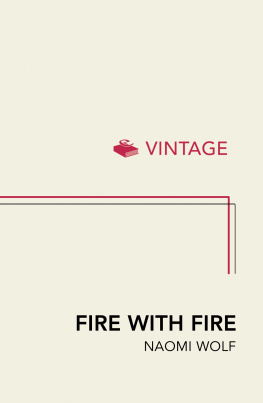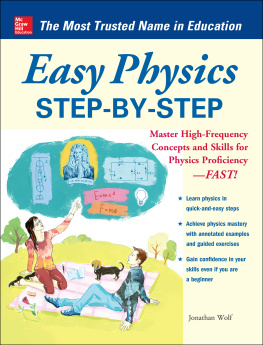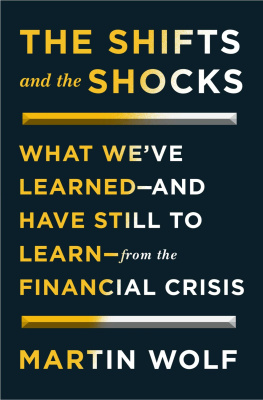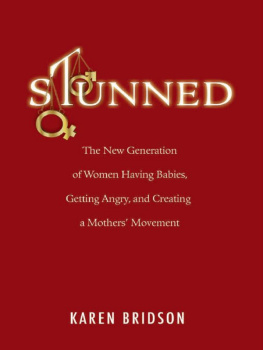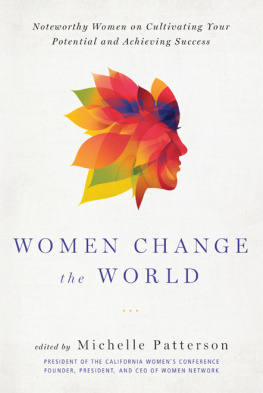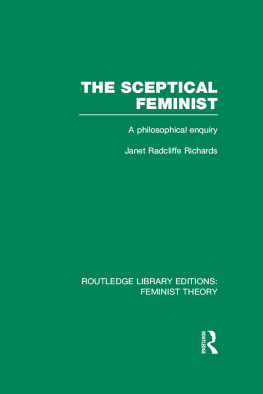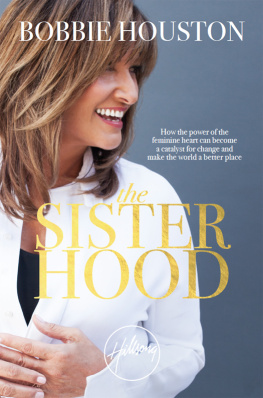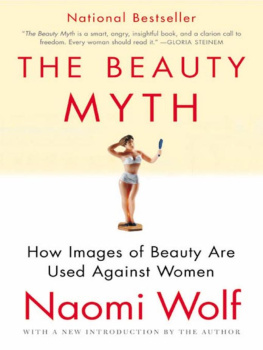Contents
About the Author
Naomi Wolf was born in 1962 in San Francisco. She studied at Yale before becoming a Rhodes Scholar at New College, Oxford, and working in Edinburgh. She was catapulted to success in 1990 by her first book, The Beauty Myth, which was an international bestseller, published in fourteen countries. She lectures and writes on womens issues all over the world, and lives in Washington.
About the Book
In her bestselling book The Beauty Myth, Naomi Wolf sought to change the way in which women see themselves in relation to their bodies. Now she focuses on how they see themselves in relation to power. She argues that the feminist movement has to change if it is to speak to a new generation of women, and that, even as women are gaining more ground than ever before, a wariness of feminist orthodoxies keeps them away from the only movement capable of putting political clout behind their personal success. The book represents a call to women to throw off centuries of conditioning about the relationship between power and femininity.
Also by Naomi Wolf
The Beauty Myth
Fire With Fire: The New Female Power and How it Will Change the 21st Century
For David
The masters tools will never dismantle the masters house.
Audre Lorde
Fight fire with fire.
Proverb
Acknowledgements
There are many without whose help I could not have written this book.
The following people took time from pressing schedules to grant me interviews: Katha Pollitt of The Nation; Marie Wilson of The Ms. Foundation; Nancy Woodhull of Women, Men and Media; Holly Ainbinder and Jim Naurekas of Fairness and Accuracy in Reporting; and Andrea Berman of Mayor David Dinkins office.
I am grateful to the audiences of men and women across the country who shared with me their concerns about and hopes for the womens movement. And I thank the groups of young women (particularly the WAC members of SUNY Geneseo, Jenna Soleo, Serena Morse, Nol Raley, Kirsten Konefal, Jill Scheltz, Nicole Montagna, Caycee Cullen, Anna Fleshler and Tammy Schultz) who allowed me to record their feelings about their relationship to the issues of power and leadership. Their voices stay with me.
Friends and colleagues work has enriched my understanding. Elizabeth Alexander of the University of Chicago discussed identity politics, race and feminism, and provided in her teaching and her poetry a role model for combining the progressive curriculum with intellectual rigour and broadmindedness. I also thank writer Susie Bright; novelist and safe-sex educator Karen Cook; Judy Coyne of Glamour, a consistently challenging ideal reader in general; and Rhonda Garelick, of the University of Colorado. Catharine MacKinnon and Jeffrey Masson discussed some of the themes; Marcia Ann Gillespie, executive editor of Ms. magazine was an inspiration early in the writing process; Barbara Findlen and Julie Felner, also of Ms., gave me extensive, salient notes on early drafts; Ann Godoff was the ideal interlocutor for this project; Ann Hornaday, author of the original PC/PI article, gave manuscript readings that have been unfailingly sharp and Susan Faludi made valuable suggestions. Nancy Frank and Susan Roxborough; Suzanne Levitt of Yale University; Tom Molner, Donna Minkowitz, Will Schwalbe, Amruta Slee, Dan and Tara Goleman, John Brockman, Katinka Matson, John Stoltenberg, Carmen Callil and Frances Coady all offered important insights. My mother and father, Deborah Goleman Wolf and Leonard Wolf, and my grandmother Fay Goleman, provided their reliable combination of vital critical commentary and general psychic nourishment.
Gloria Steinem merits special acknowledgement. She read and commented on a draft while under a deadline of her own.
Many people helped me meet this and other commitments: Enrika Gadler, Beth Pearson and the production staff at Random House (who made miracles of order from my cryptic notations and baroque system of inserts); Alison Samuel, my editor at Chatto & Windus; Helen Churko, Lucy LePage and Carlton Sedgley of Royce Carlton, and Bethany Saltman. Joan and John Shipley made their hospitality available to me, as did The Virginia Center for the Creative Arts. Finally, my gratitude to Anastasia Gochnour, who assists me, is profound. She oversaw the needs of the office with foresight and creativity and contributed in many other ways.
I would also like to thank Candida Lacey and the following organizations for their help in providing me with information for the British edition: The Association of University Teachers (AUT); The Broadcasting, Entertainment, Cinematograph and Theatre Union (BECTU), especially Jane Paul, the Equality Officer; The British Film Institute; Nigel Dyckhoff of Spencer Stuart and Associates Limited; Emilys List, UK; The Equal Opportunities Commission; Equity; The Institute of Directors; The Institute of Management; The Institute of Manpower Services, University of Sussex; The National Union of Journalists (NUJ); The 300 Group; Women into Business; Women in Management; Women in Film and Television; Women in Publishing; and The Womens Broadcasting Committee.
Readers may be surprised to see that I appreciate on some pages thinkers or publications with whom I argue on others. Let this book be read with the thought in mind that drove me to write it: dissenting from anothers ideas is a form of honour, and taking a critical look at ones own cherished movement is an act not of sacrilege but of love.
Introduction
The 1980s were the height of the backlash years, but from the autumn of 1991 to the present, a new era has begun the era of the genderquake, in which the meaning of being a woman is changed for ever. The genderquake started in America with the eruption of Oklahoma law professor Anita Hills charges of sexual harassment, rocked through 19912s famous rape trials, flung into the light of day allegations of Senator Bob Packwoods sexual harassment of colleagues, and of the sexual abuse of US Navy women at the Tailhook Convention; and provided the impetus for 52 new women legislators to take their seats in the House of Representatives and the Senate. From these beginnings, and with the election of pro-feminist President Clinton in the USA, the election of the first female Prime Minister of Canada, and the re-election with the womens vote of socialist Prime Minister Paul Keating in Australia, a train of events has been set in motion that leads to one conclusion: women have become the political ruling class. And they have the historical distinction of being the only ruling class that is unaware of its status.
During this short time, contributions to womens groups reached record highs in the USA; Emilys List, the Democratic Womens Political Action Committee, which funds the women candidates who have the best chance of winning, became the biggest lobbying force in the country, garnering millions of dollars for women office-seekers; advertising changed, with women depicted in positions of power, being worshipped by men; self-abnegating self-help books for women fell by the wayside, to be replaced on the bestseller lists by Women Who Run with theWolves and Revolution from Within; a million women overwhelmed the Capitol in the largest pro-choice rally in a decade; and a spate of new womens groups, with a media-conscious, take-no-prisoners attitude, mobilized at the grassroots in a frenzy of organizing unseen since the early 1970s: the Womens Action Coalition (WAC), the Womens Health Action Mobilization (WHAM!), YELL, the Riot Grrls, and the Third Wave Organization, all were born.
Next page
